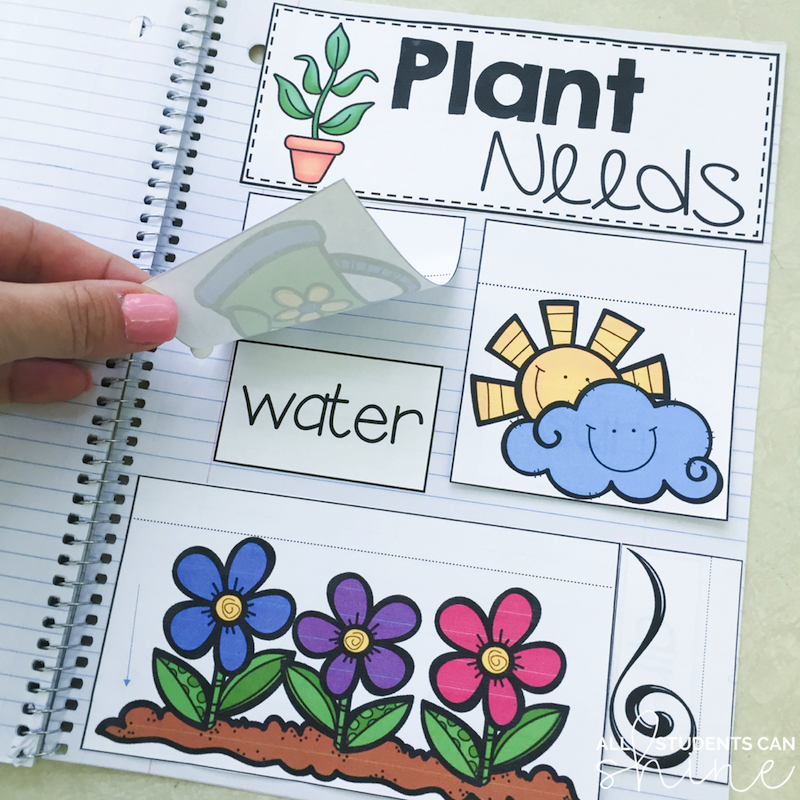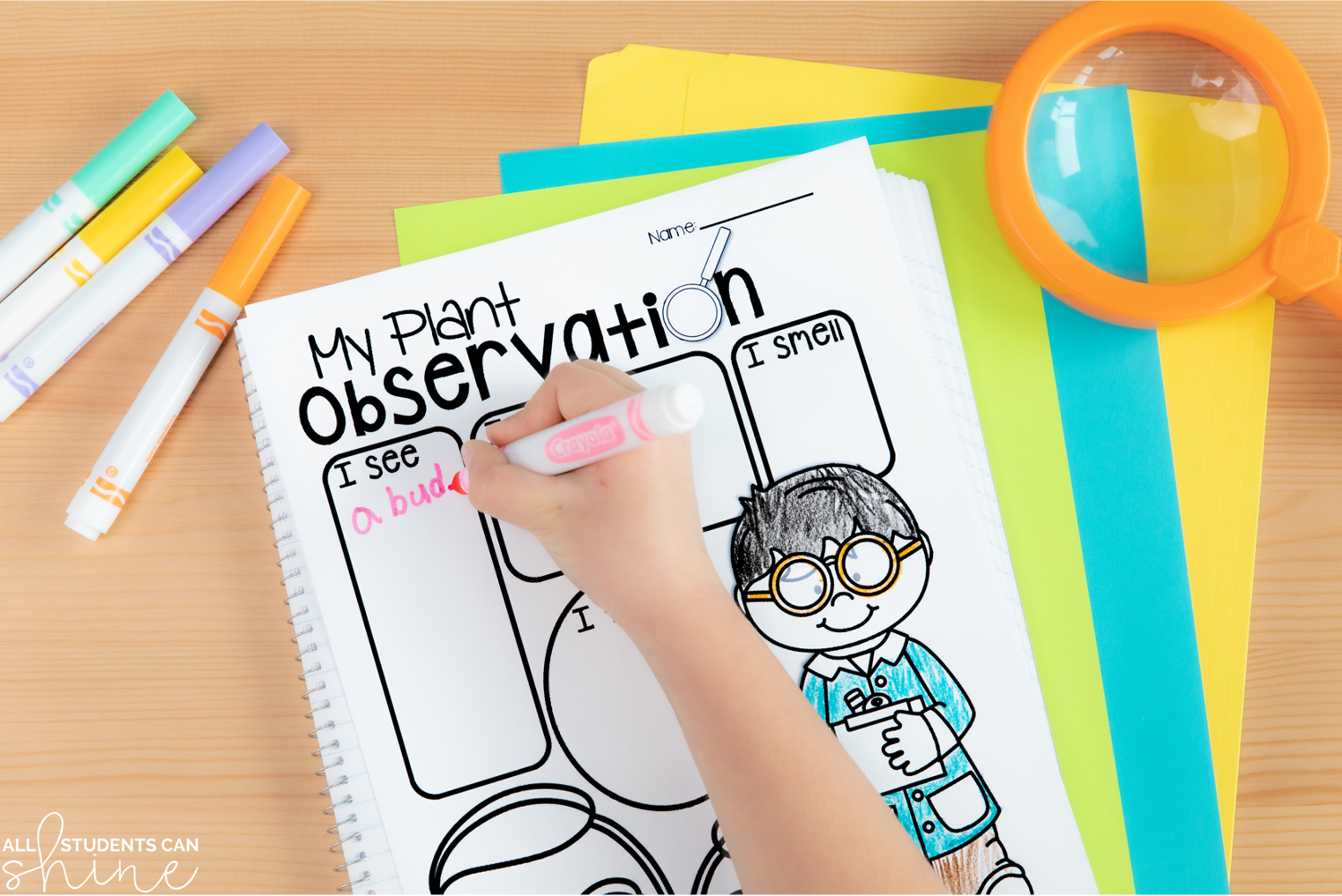It might not feel like it yet, but believe it or not, Spring is just around the corner! One of my favorite ways to usher in the new season is by teaching my students all about plants.
I love teaching this non-fiction unit because there are so many fun and engaging activities to do with the kiddos. We learn about the full life cycle of a plant, how to plant seeds, and what a plant needs to grow. We even get our hands dirty (literally!) with our own little seedlings.
Today I’d like to share how I structure this unit in my classroom, including several resources for you to try out.
Brighten Your Classroom With Plant-Themed Visuals
One of the best things about the plant unit is that it’s a great excuse to brighten up your classroom with all things green and flowery! I love to kick off our plant unit by creating a collective visual masterpiece. The students and I work together to create a plant-themed bulletin board. Highlight different parts of a plant’s life cycle by including soil, seeds, roots, and of course the pretty greenery and flowers that sprout up!
In addition to a bright and informative bulletin board, I also like to create a plant-themed word wall. This will help students learn new vocabulary like seedling, bud, stem, sprout, petals, and more. You can reference the word wall as you encounter the vocabulary in your reading and writing activities throughout the unit.
Reading All About Plants
Early in the unit, we develop our base knowledge about plants by reading a variety of non-fiction texts and watching some short videos. I like to use mini readers and targeted close reading activities to introduce important concepts like the plant life cycle. Of course, there are plenty of fun and informative books about plants, so be sure to throw some longer texts in there during story time.
As students practice reading using our mini books, I work with them to fill in information on graphic organizers and in their interactive notebooks. Our word wall really comes in handy here as students get used to new words like germination and fertilizer. For many students, these are brand new words to learn!
Writing Activities For Your Plant Unit
Once my kiddos have had some exposure to our new vocabulary and concepts, we start writing! They take what they’ve practiced with our close reading activities, our graphic organizers, and our interactive notebooks and start to get creative!
We move from sentence writing as we describe what plants need to grow to sequence writing to describe the plant life cycle. Depending on the time we have available, I may choose from a variety of other styles of writing, including:
- Opinion writing—Would you rather plant flowers or vegetables, and why? What flower do you think is the prettiest?
- Narrative writing—My beautiful garden; If I was a botanist.
- Poetry—Acrostic poems based on plant-themed vocabulary.
- Observational writing—Describe a garden or particular plants using all five senses
Play Interactive Plant-Themed Games
A unit wouldn’t be complete without some fun games to play with your students! I developed a no-print interactive game that’s perfect for distance learning. You can try the free version here! It’s an interactive PDF with a mix of true/false and multiple choice questions to introduce or reinforce plant vocabulary and concepts learned in the unit. If you like what you see in the freebie, you can grab the full version which includes 4 different games and 40 total questions.
Of course, you can use word cards to play classic interactive games like Quiz-Quiz-Trade or Scoot. We all know kids need to get up and moving throughout the day, and these games are perfect for getting some wiggles out!
Get Your Hands Dirty By Experimenting With Plants
There are SO many science experiments you can do with plants, it can be hard to choose which ones to do! There are a couple of classroom favorites that I always try to fit in.
- Germinate your own seeds—using a plastic baggie, a few dried beans, and a wet paper towel, your students can see the germination process up close. We hang our baggies in the window where they’re sure to get lots of natural light and then watch as the seeds germinate and begin to sprout over the course of a few days.
- Discover how plants absorb water—all you need for this experiment is some celery stalks, food coloring, and a vase of water. Trim the bottom of the celery stalk before placing in the colored water, and then watch as the dye travels up to the leaves. Tip: use the lighter-colored interior stalks rather than the darker green stalks on the outside of the bunch. The color shows up better that way!
Conduct a Class Survey
A fun way to tie several skills together is to have students create and conduct a class survey. Ask pairs or small groups to come up with a list of a few questions they can poll their classmates on. Some ideas include:
- Do you have a garden at home?
- Do you prefer to plant flowers or vegetables?
- Does your family have potted plants inside your house? Do you help water them?
Students can practice their communication skills as they ask classmates for responses. Then, they can practice math skills by tallying up and sharing the results! Who knew a class survey could be such a well-rounded activity?!
Get the Resources You Need to Teach All About Plants!
I hope you found these ideas helpful as you start to plan out your Spring lesson plans. If you’d like a full unit plan that’s ready to go, check out my full Non-Fiction Plants Unit. It includes everything I’ve talked about here, plus lots more!
Looking for more? Read THIS other blog post on my plant unit.















